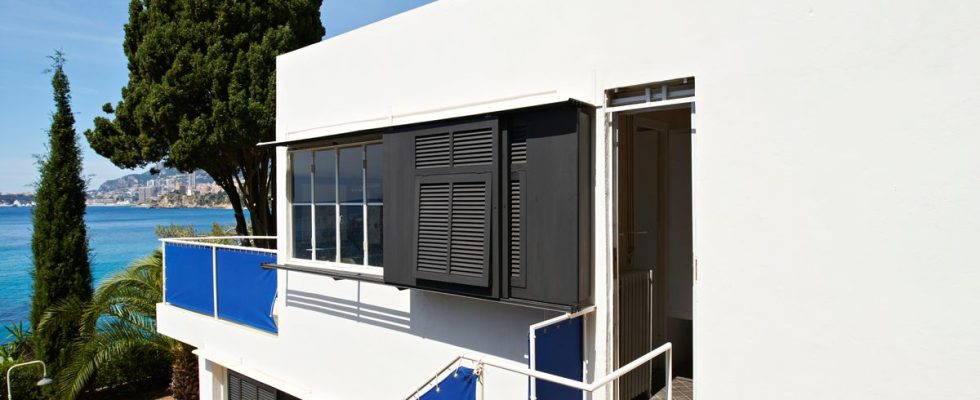In Roquebrune-Cap-Martin (Alpes-Maritimes), a stone’s throw from the Italian border, between Monaco and Menton, you can access this “house by the sea” via the customs officers’ path. Situated on rocks licked by the waves, once abandoned then squatted after the murder of one of its owners, Villa E-1072, its official name, was saved. Since 2015, it has been a museum. Very visited. “People come from all over the world for the name of Eileen Gray,” explains Elisabetta Gaspard, tour guide and cultural action manager at the Center des monuments nationaux.
With this building built between 1926 and 1929, with and for her friend Jean Baldovici, owner of the land, the Irishwoman, considered the pioneer of design and best known for her Art Deco furniture, left her mark on the modern movement and shook up certain codes. “In the 1920s and 1930s, the profession of architect was considered a man’s profession,” recalls the specialist.
A “futuristic” house
For a long time, the designer was ignored, even neglected, by the profession. “She was completely rediscovered after her death,” she says. And his villa on the Côte d’Azur, which Eileen Gray herself nicknamed the “stationary liner”, is one of the centerpieces of his work. Named after the registration of a ship (E-1027, i.e. “E” for Eileen, “10” for the tenth letter of the alphabet, the J of Jean, 2 for the B of Badovici and 7 for the G de Gray), it includes two floors and 120 m2 “full of very surprising things”, describes Elisabetta Gaspard.
Its designers themselves spoke of “a house built for a man who loves work, sports and loves to entertain his friends. “. “At the time, my own grandmother, who was a cook in the house, explained that she was ‘futuristic,’ she continues. Eileen Gray drew everything. Fixed and mobile furniture, lighting, deckchairs that can be used indoors and outdoors with their coated canvas like boat seats. Revolutions, like accordion bay windows and sliding shutters, but with shutters. “It’s a house that was already bioclimatic. With Jean Baldovisi, they thought about orientation, the sun and the wind. Pivot windows allow you to direct the direction of the air,” explains the specialist.

“The place it deserved in the history of design”
“Eileen Gray was a trailblazer. But she died in 1976 somewhat anonymously. During her lifetime, she did not promote herself, unlike many others at the time, says Elisabetta Gaspard. And it was only after her death that she was given the place she deserved in the history of design. »
Eileen Gray’s work sells. In 2009, his “dragon” armchair became the most expensive decorative object of the 20th century. This “masterpiece of invention and execution”, according to Christie’s, was purchased at auction for 21.9 million euros. A record. “The artist’s popularity and public interest have only increased in recent years. Of the only two houses she drew [l’autre, Tempe a Pailla, est située à Menton], Villa E-1027 is the only one open to the public. And the visits don’t stop, repeats the guide. She had started many other architectural projects, but which never saw the light of day. »

